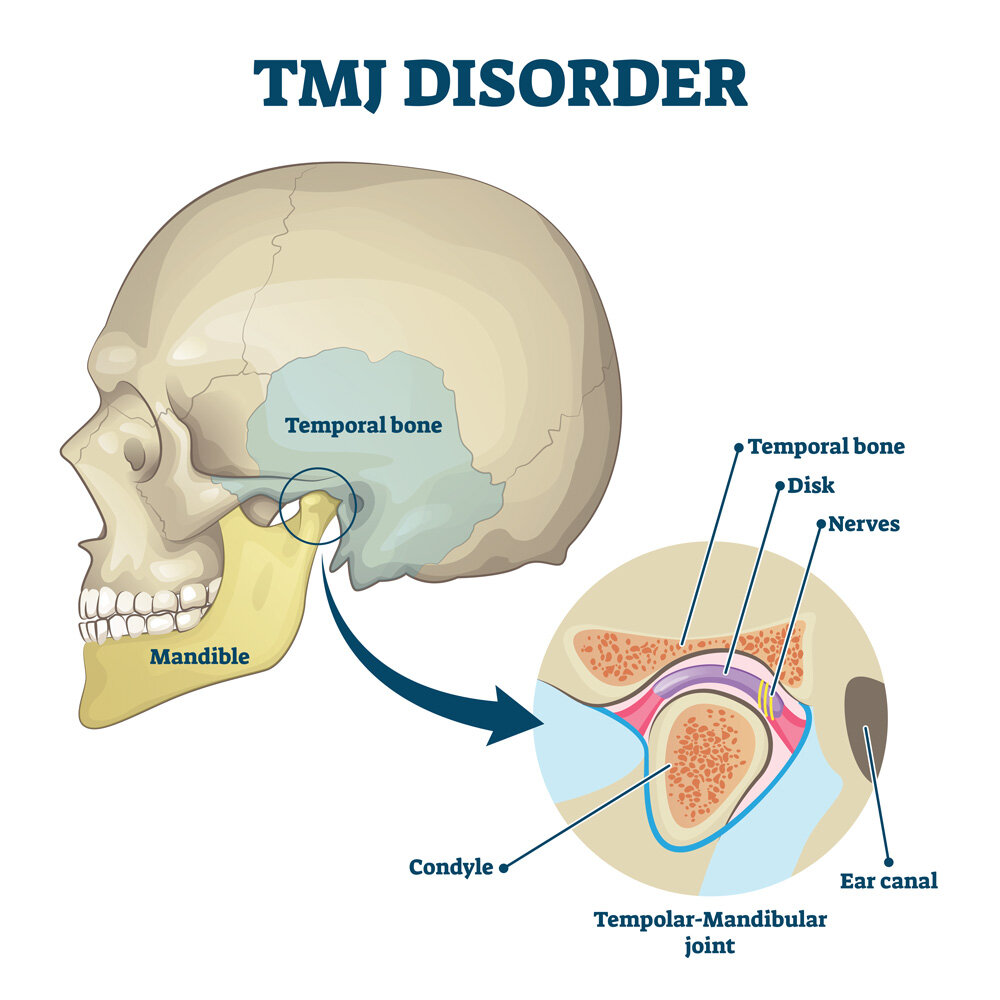
TMJ Disorders
temporomandibular disorders and treatment
The temporomandibular joint (TMJ) is a small hinge joint separated by a disc which allows the lower jaw to open by rolling and gliding along the temporal bone. The TMJ requires good joint mobility, flexibility, and muscle strength to ensure proper movement and function. However, it requires specialized evaluation and treatment by a dentist and therapist who are specifically trained in this area.
Temporomandibular disorders (TMD) can cause clicking, popping, grinding, and painful mouth opening during activities such as eating, talking, and yawning. TMD is often associated with migraines, facial pain, headaches due to the distribution of the trigeminal nerve which supplies sensation to the face as well as motor control to the muscles which perform chewing. TMD is also often related to neck stiffness due to the neural connections between the trigeminal nerve and the upper cervical spine ( C1-3).
Clicking and popping is often caused by anterior displacement of the disc which can occur when the muscles attached to the disc become very tight. This tightness can be caused by a history of clenching and grinding or could be related to prolonged mouth opening during a dental surgery or routine cleaning. In some cases, TMD can be relate d to bite malocclusion or recent orthodontic work.
Even the most chronic cases of TMD often respond well to physical therapy to improve joint mobility and muscle tone for increased mouth opening and to restore normal motor control for chewing. Dry needling, joint mobilization, soft tissue mobilization, and exercise are often components of your physical therapy treatment. Patients will typically attend therapy 1-2x/week for 4-6 weeks until they are able to open the mouth within a normal range of motion and chew with minimal pain and clicking.

